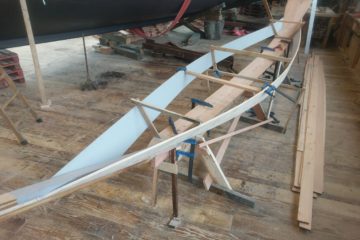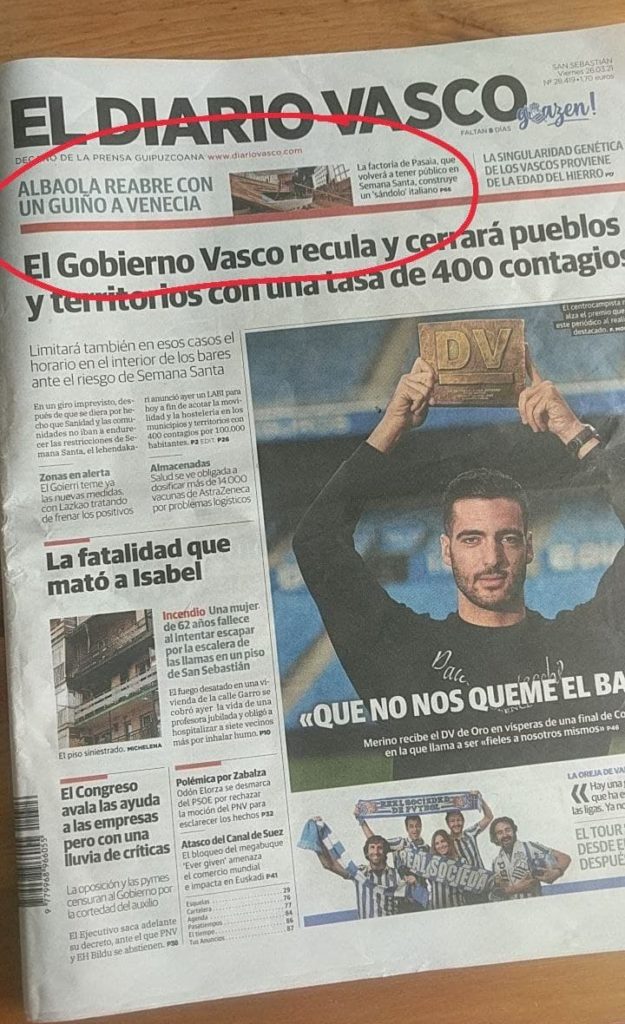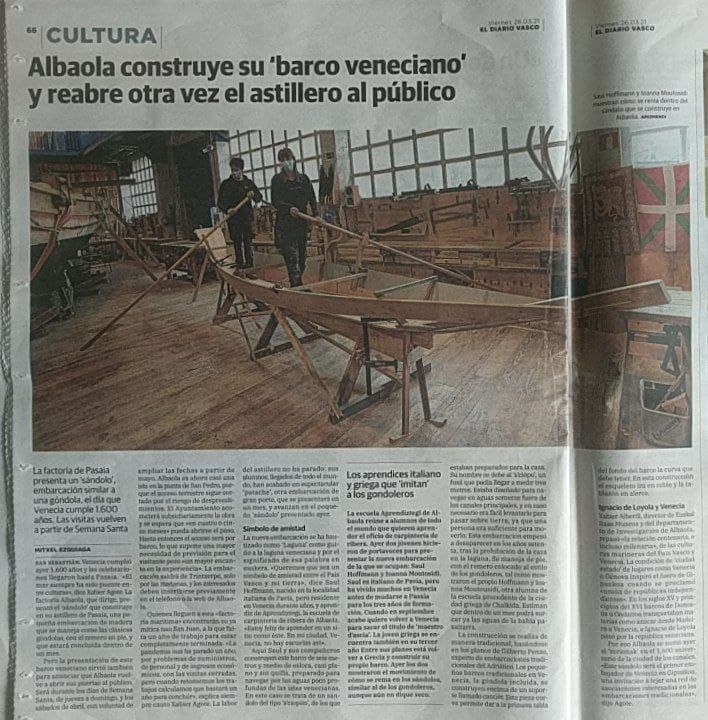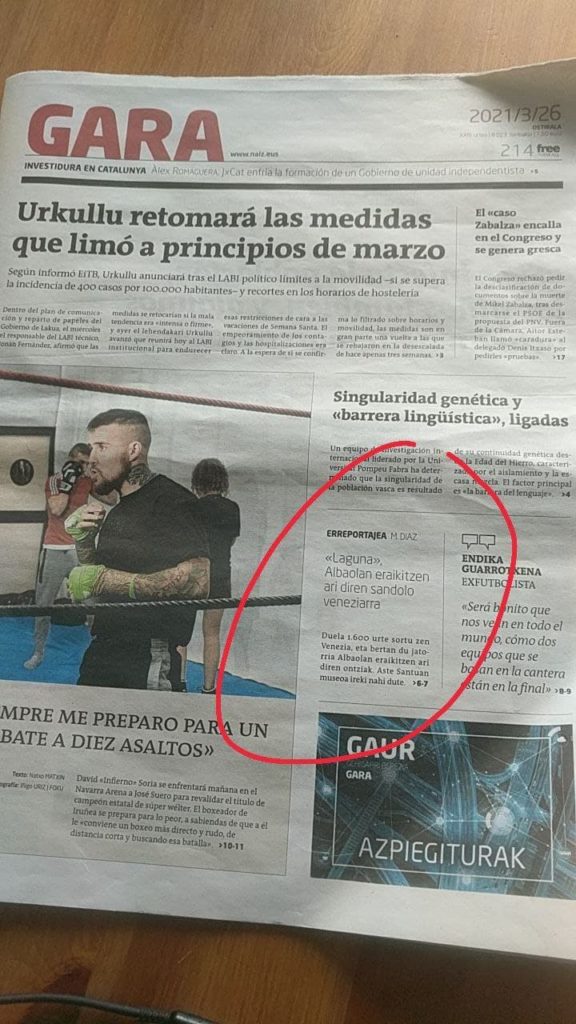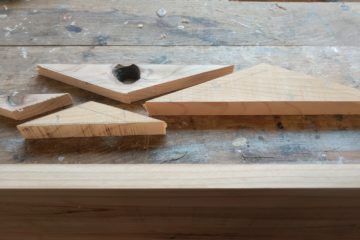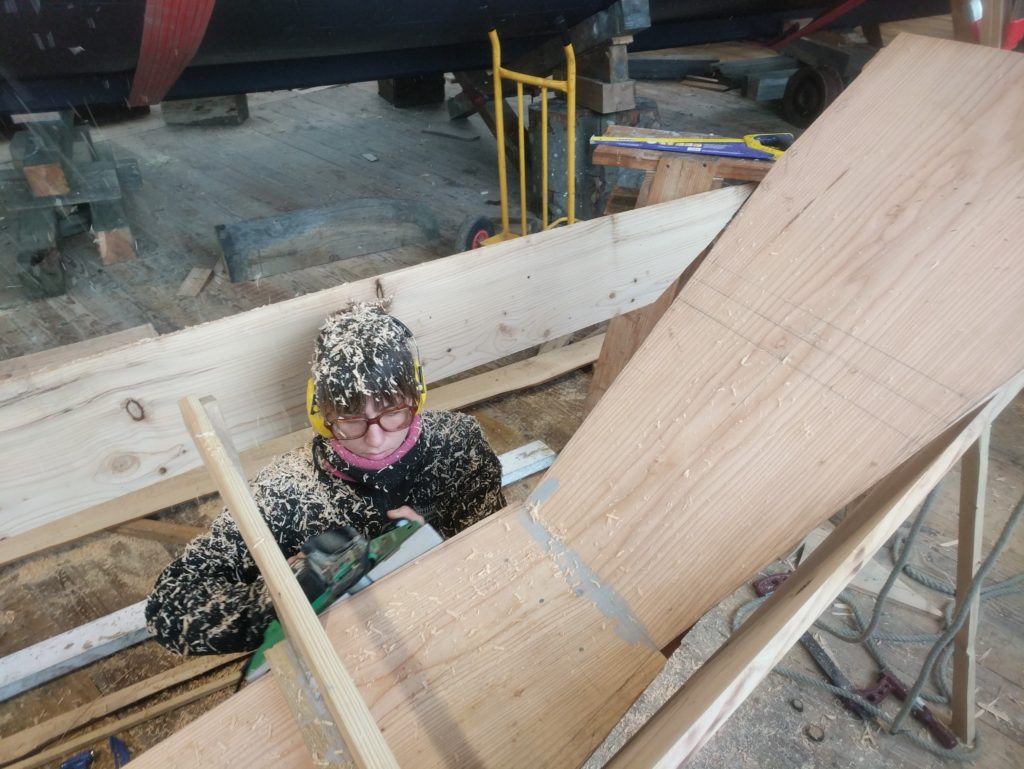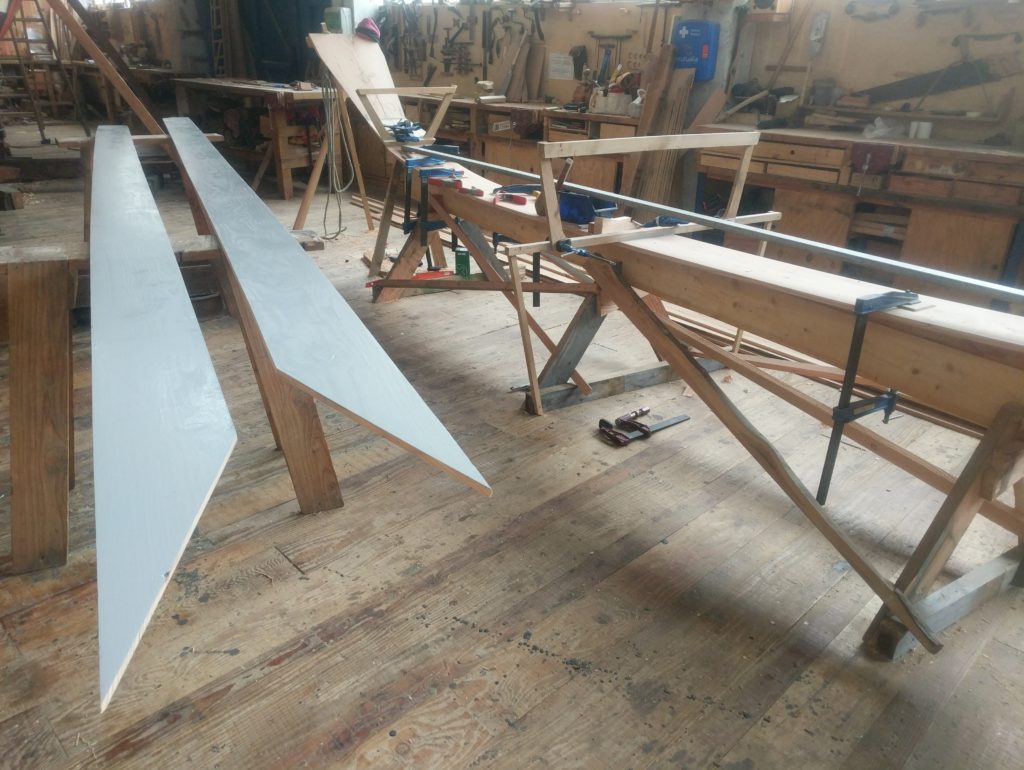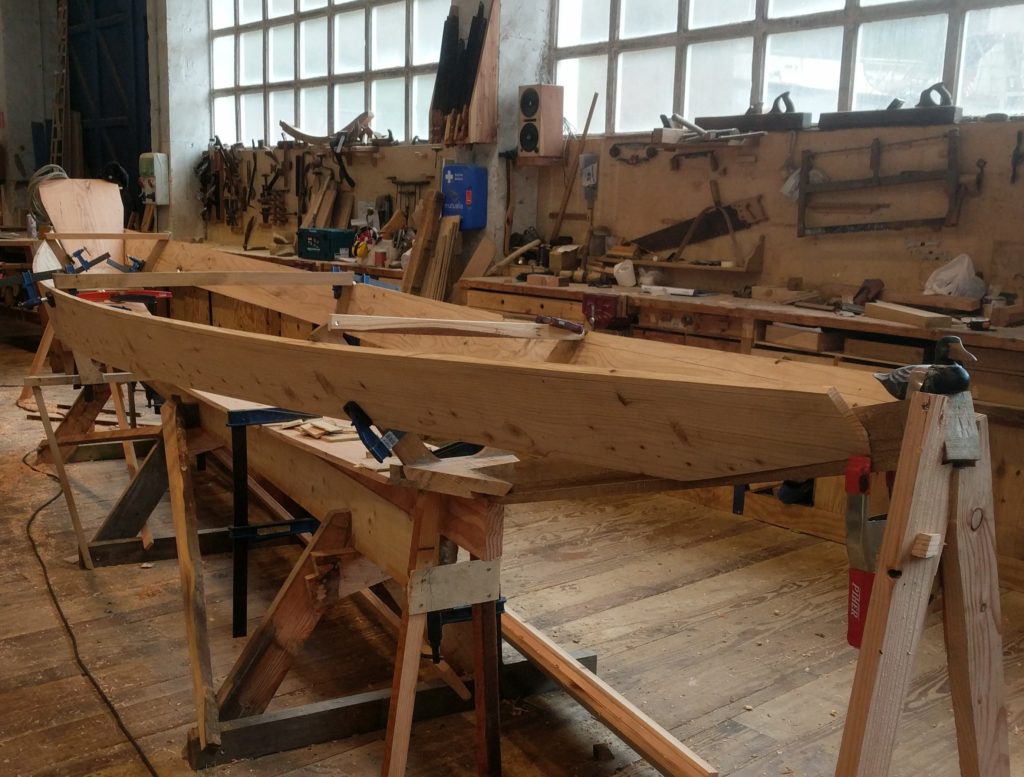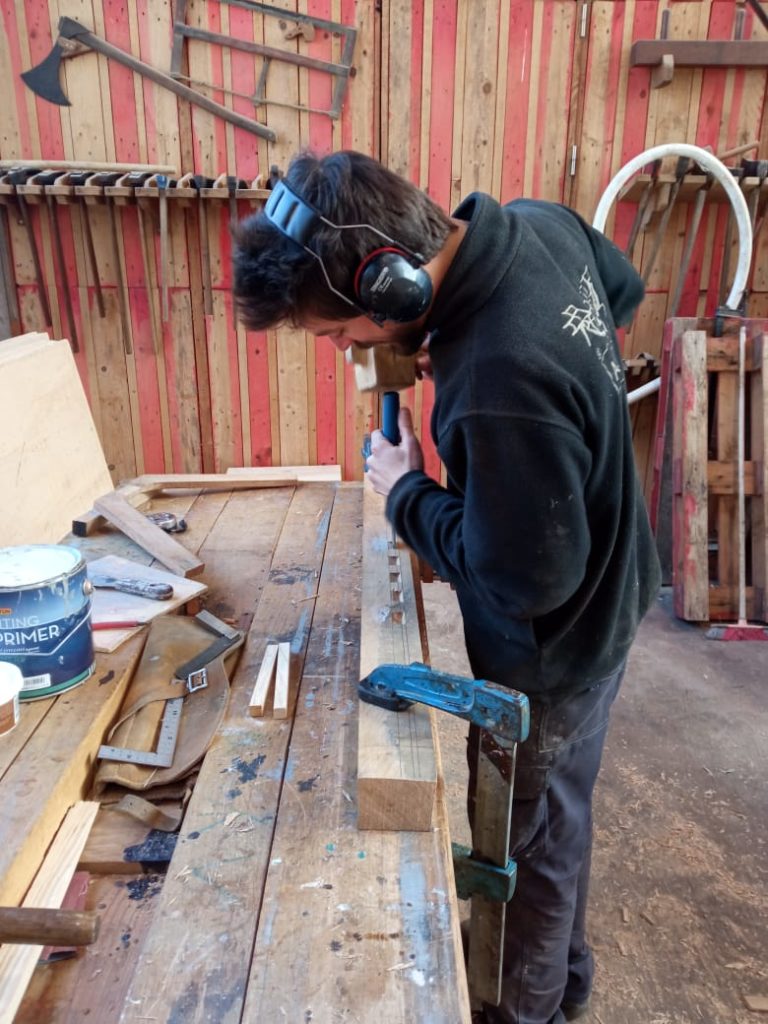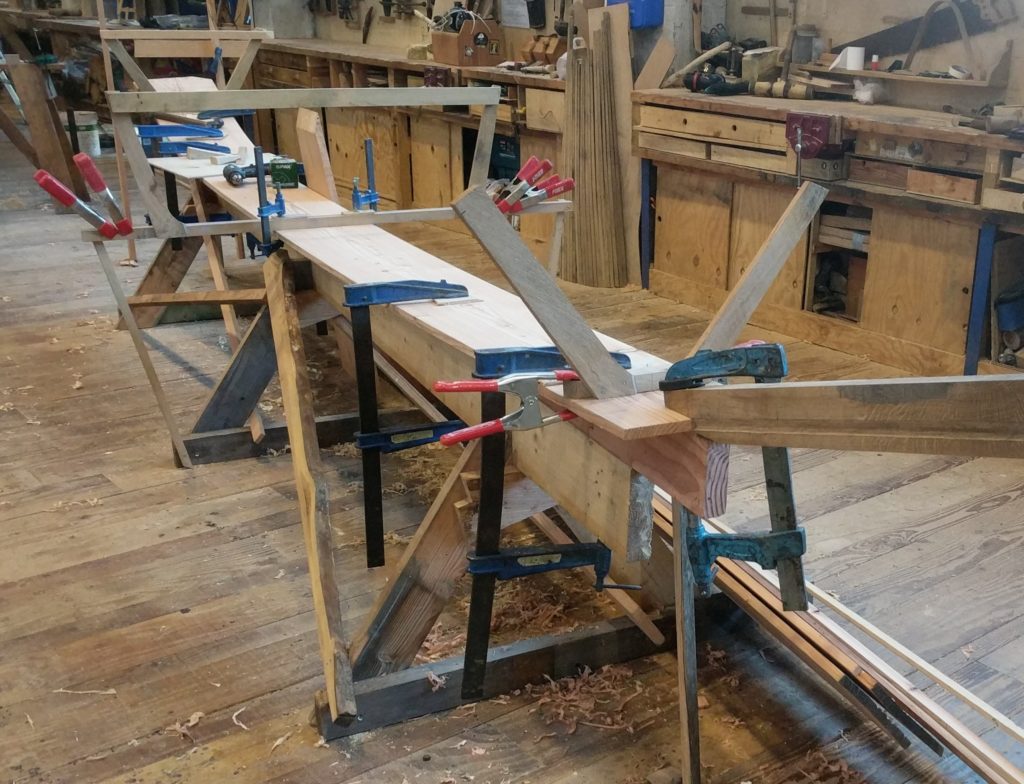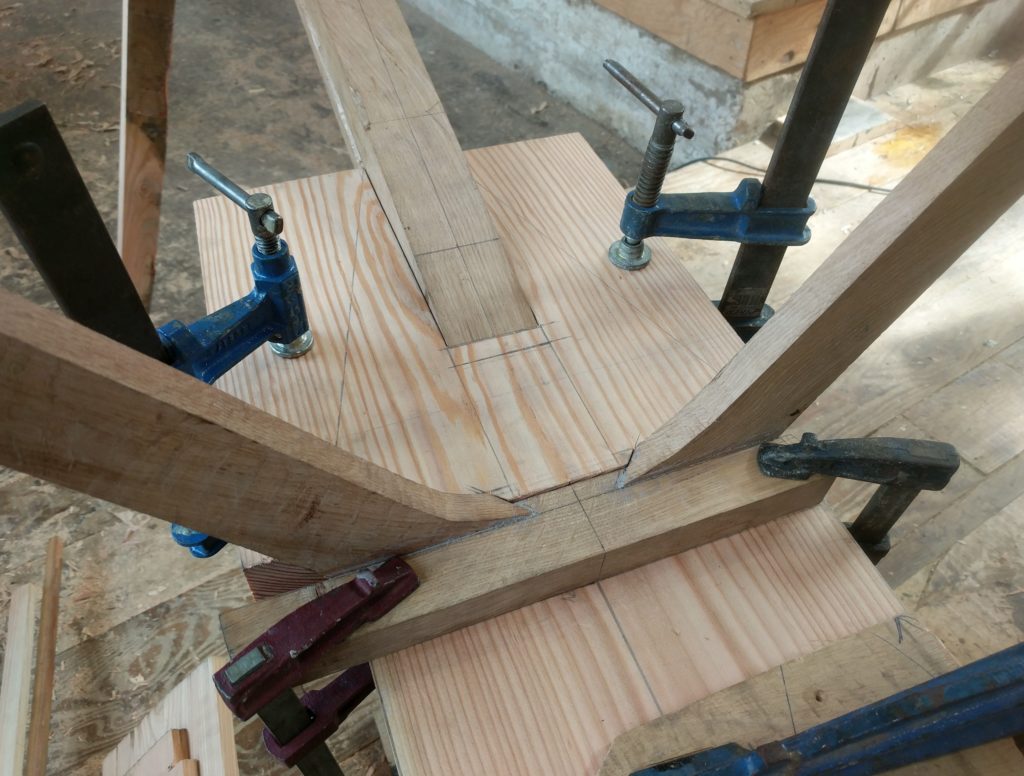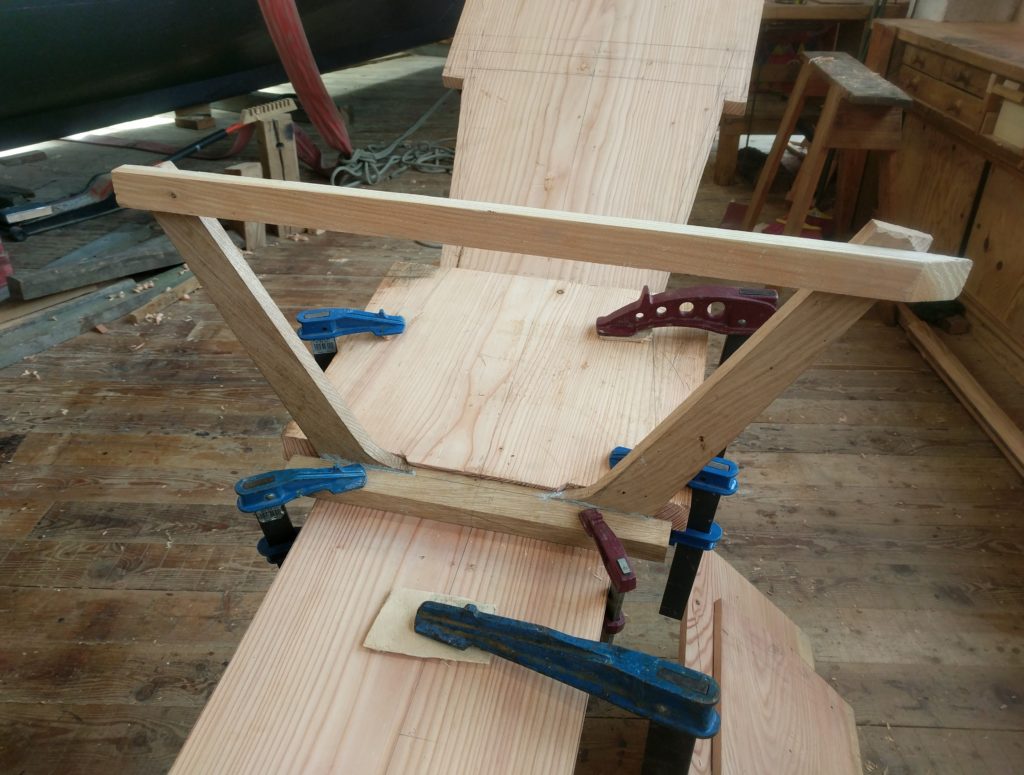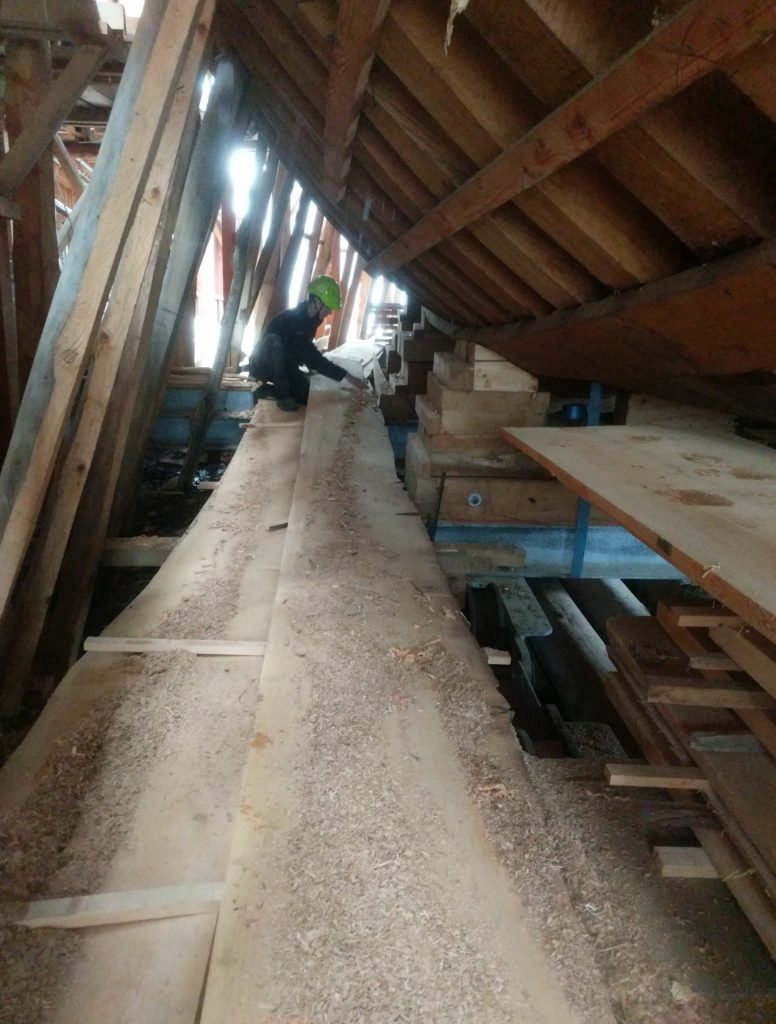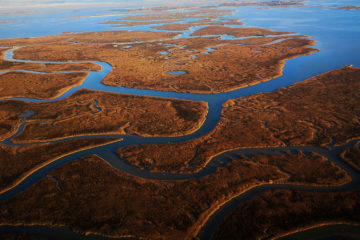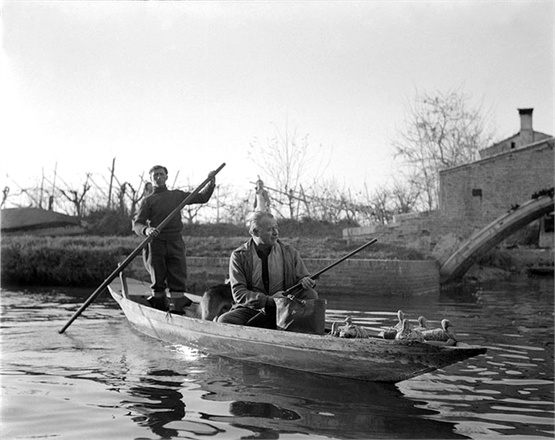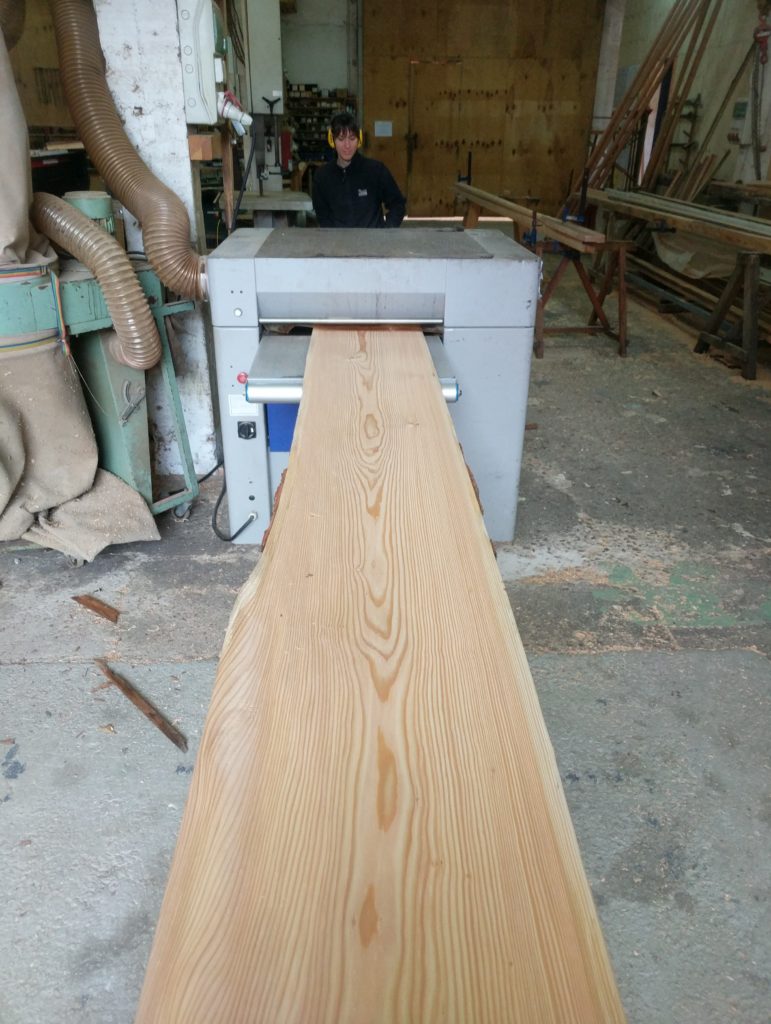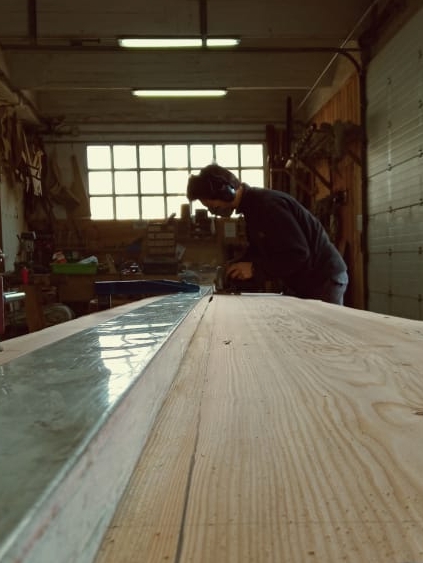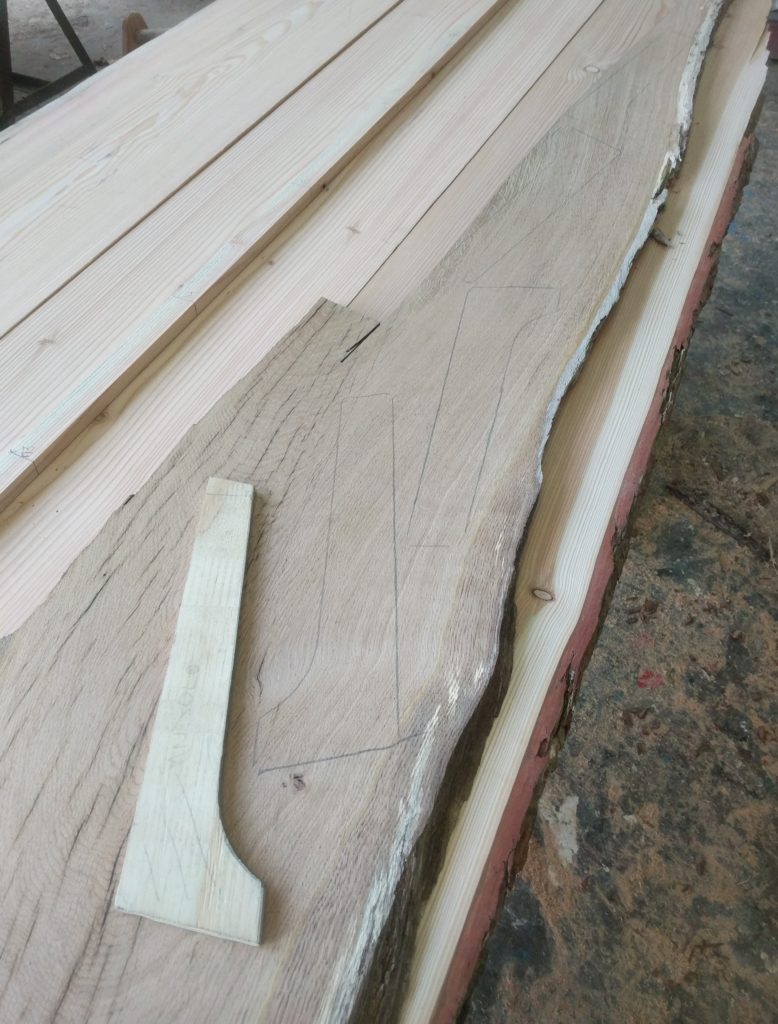Sorry if I am bit late with this update on last week’s progress. As I mentioned in my last post, we had a press conference on Wednesday, and this weekend I have been busy looking for all the articles that have been published. They are quite a few, both in Spanish and Basque (plus an Italian one, on a local newspaper of Venice).
You can find them all here: https://acquastanca.eu/2021/03/27/intermezzo-rassegna-stampa/
But let’s go back for a second at the beginning of the week. This is the boat as we left it the previous week.

We had decided we wanted to have something to show to the journalists, so on Tuesday we finally nailed the sheer planks on.
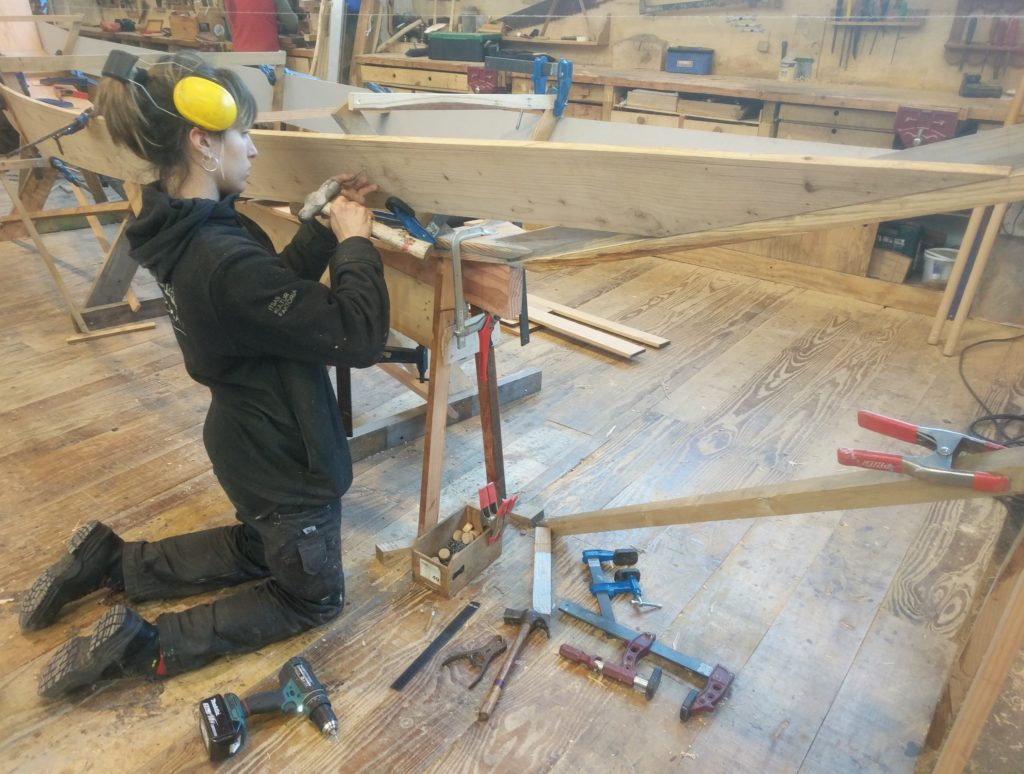
Here a close-up of the new stem (the cutwater still needs to be shaped). The nail heads will later be covered with puddy, and then painted over together with the sides. On the plank it’s easy to spot one (or two) diamond-shaped repairs, which replaced dead knots.
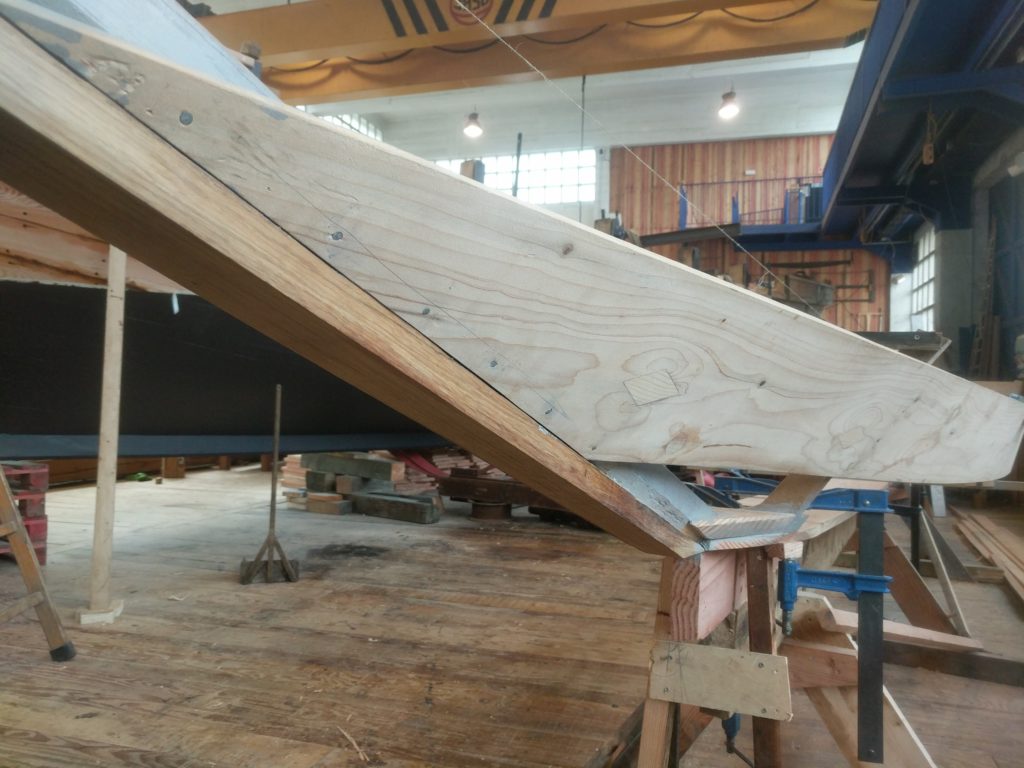
All in all, the boat looks cool. We took out our oars and forcole, plus an ikurrina (https://en.wikipedia.org/wiki/Ikurri%C3%B1a) and even a Venetian flag (https://en.wikipedia.org/wiki/Flag_of_the_Republic_of_Venice). Thanks to our colleague Antoine’s parents for this last one!
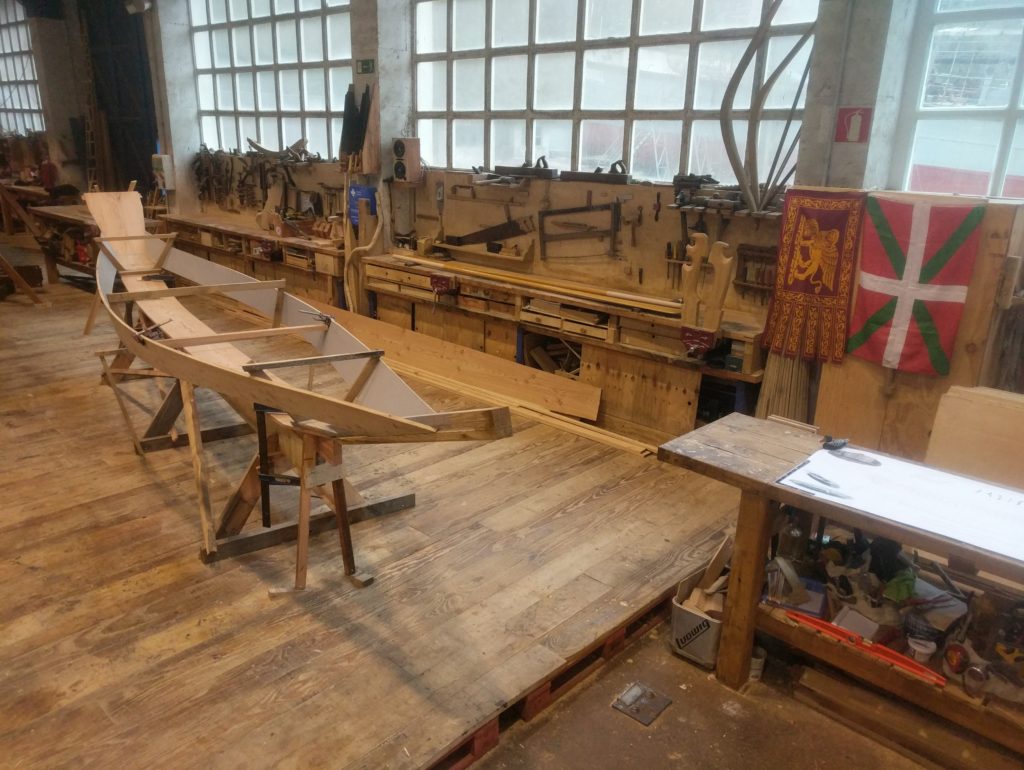
Very happy with the result, after the press left we realized we had actually hanged the planks lower than they should have been. This is what you get when you work in a hurry!
Nobody noticed, of course, and until the boat stays in the Basque Country nobody ever will, probably. But today a Venetian friend (Gilberto Penzo, the author of the plans, nonetheless) called me to ask why the sheer looked so low…
I guess that for your first construction you are bound to make mistakes.
The problem is that by now we have already started fitting in the other frames, nailing them in place. There’s no way to move the planks now.

Albaola’s museum will open this Easter, so we’ll keep working through the holidays. I hope we can finish all the frames, and install the seat-riser by the end of the week. Maybe we might as well start thinking about the decks?
